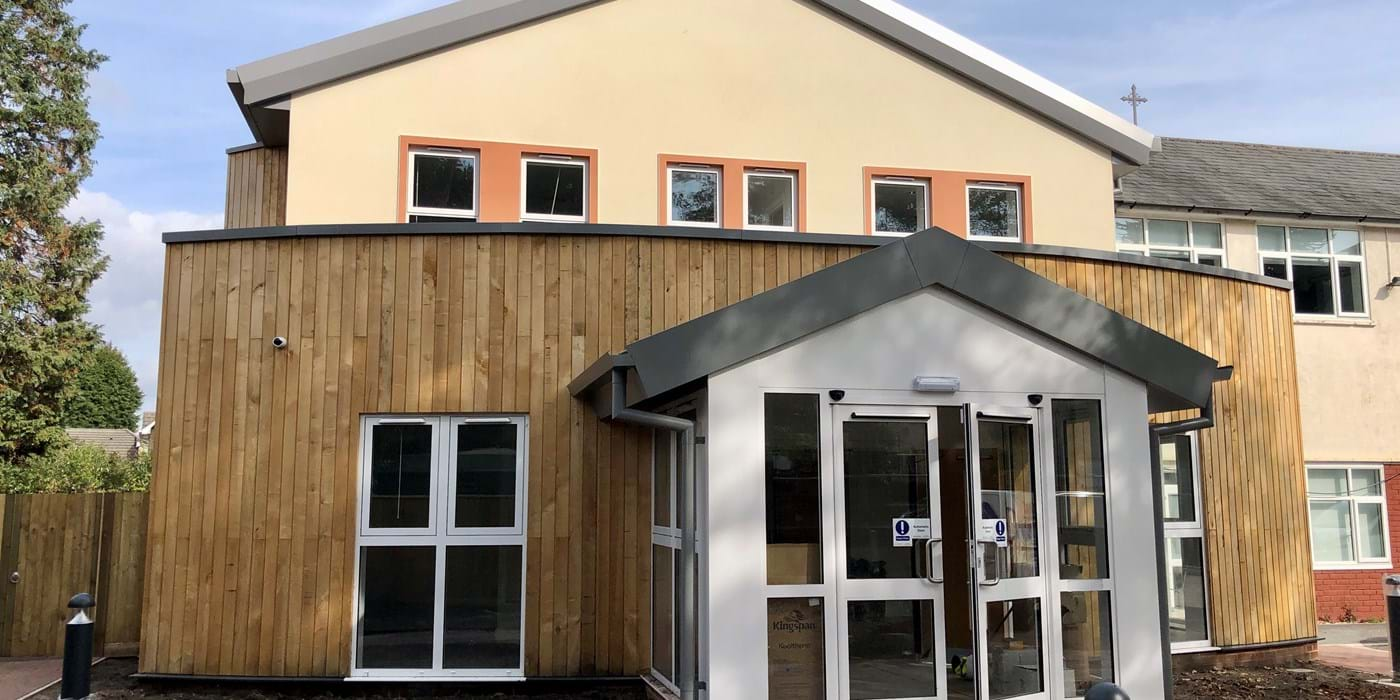Gold Standard for Collaboration

Interview with Dr. Neil Langridge
AECC University College’s Integrated Rehabilitation Centre is headed up by Director of Clinical & Rehabilitation Services, Dr. Neil Langridge.
Neil joined us at the beginning of the year from Southern Health NHS Foundation Trust where he worked as a Consultant Physiotherapist and Clinical Lead of Musculoskeletal Services. He brings 27 years’ experience in the NHS to the role and continues to be involved in issues of professional governance, leadership and education within Physiotherapy at a senior level.
Neil shares his vision for the new facility, explaining how it will enhance students’ education on-site and play a role in improving the health and wellbeing of the local community.
He outlines the ways in which the Integrated Rehabilitation Centre (IRC) has the potential to offer a gold standard model for collaboration between rehabilitation services:
Empowering patients to reach their potential
“The focus of all the rehabilitation treatment that takes place at the Integrated Rehabilitation Centre will be about reaching potential. The outcomes of this will vary from person to person: it might be helping a disabled patient to get out of a chair unaided; or enabling a breathless patient to walk down the road. It might also be getting an elite athlete to the Olympics.
“Rehabilitation is massive: it’s not just getting fit and well. It encompasses everything that makes you you.
“Rehabilitation has a part to play in everybody’s health, wellbeing and recovery; whatever the disease process, pathology or injury. You get well, medically speaking, and then you have to get back to what you were doing, or go above that.”
Challenges facing rehabilitation
“The NHS is brilliant at getting patients well and able to leave hospital. What we struggle with as a country is getting people back into their daily activities. That includes their work, social lives, and the emotional things that they enjoy.
“There are significant issues facing the health service, in terms of resourcing rehabilitation. There are more people facing major problems than there is funding or support for rehabilitation. There’s a definite need for additional support for populations.
“When people walk through the doors of the Integrated Rehabilitation Centre, the different care services that we offer should wrap around them. We’ll navigate them to the specialisms that can help their recovery.”
First five years of the Integrated Rehabilitation Centre
“In the first five years, we’ll establish the broadest range of physical, mental and emotional rehabilitation support. This should in turn map and parallel the content of the courses that we are offering at AECC University College.
“We’ll have a core set of offerings: Physiotherapy, Chiropractic treatment, MSK, imaging packages and neurology.
“We’ll offer rehabilitation for musculoskeletal conditions and over time, we’ll build up the team with clinicians from all different specialisms. From doctors, to speech and language therapists, neurologists, mental health support, vocational support and charitable interventions.”
Local community focus
“We’re also looking to support people who can’t access care. They might have poor health literacy and be unable to access services. They find themselves discharged from primary or secondary healthcare and feel stuck.
“We’re also looking to support the health service and social care services locally with health campaigns. As a society, we are facing problems like obesity, diabetes and physical inactivity. We should be creating campaigns to help tackle those problems locally and I think we’re agile enough to do it.”
Involving students in care
“We want to combine supporting students and their practice with maintaining a community focus. That’s what appeals to me in particular: providing something for our students that is different, as well as following a community-focused rehabilitation model.
“We aim to offer students placements in the Integrated Rehabilitation Centre, as part of their course. Allowing our students to play a significant role in the Centre, carefully supervised, means we can keep the cost of treatment down too.
“We’ll essentially follow a triage model. If a patient comes to us and doesn’t know what help they need, we’ll offer them a short 10-minute phone call, or an email exchange, which will direct them to the right part of the Centre.
“If the issue is relatively straightforward to provide treatment for, we can quickly get the patient in to see a student, overseen by a clinical lead, and treatment can begin right away.
“Alternatively, if someone comes in with persistent lower back pain who has seen three people and hasn’t got any better, they will need to see a fully-qualified member of staff.
“Patients can also self-select: they might really want to see a Chiropractor, or they might want to see a Physiotherapist.”
Gold standard for collaboration
“My aim is for the Integrated Rehabilitation Centre to be a gold standard for collaboration between services. We’re a forward-thinking organisation that prioritises collaboration to help patients reach their potential.
“We’re bringing professions together in what I would call a community of practice, based on competency, safety and capability. With different services working together in this way, we can create something really exciting and unique that will enable our patients to reach their potential.”

Above: Dr. Neil Langridge